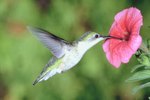The look and sound of a bright, singing canary is sure to bring a smile to anyone's face. These popular little birds have been around as pets for centuries and many varieties are available, including a few that hail from Spain. The Spanish timbrado is known for his beautiful song, making him a standout among Spanish canaries.
A Little Bird History
In 1496, the Spanish conquered the Canary Islands and became so enchanted with the small native birds living on the islands that they took some back to Europe. The birds became popular for their cheerful songs and were bred, steadily increasing the distinct varieties; eventually breeders worked to develop canaries with different colors, body types and tunes.
Types of Canaries
Canaries for the pet trade are bred for one of three qualities:
- Color -- canaries come in more than yellow; a wide variety of reds as well as other colors, including whites and browns, are available.
- Song -- only male canaries sing, and some species are bred specifically for the kind of tune they carry.
- Body type -- canaries may be bred to conform to a specific body type, such as the Yorkshire canary's broad head and chest and narrow lower body.
Spanish Canaries
As the country that introduced the canary to Europe, Spain has contributed a variety of canaries, including:
- The Spanish Giboso, a frilled canary, sporting swirled feathers. He's a bit over 6.7 inches long with slender neck. He was first shown in 1982.
- The Spanish Llarguet, about the same size as the Giboso, with a slender, somewhat cylindrical build.
- The Spanish Raza is smaller, approximately 4.5 inches long, and has a small head and slim upper body. He's not known for his distinctive song, despite being bred as a song canary. He was developed in 1930.
- Melado Tenerife, from the Spanish island of Tenerife. A frilled canary, he's at least 7 inches long.
Spanish Timbrado Canaries
The Spanish timbrado is a popular canary, bred for song and body type, which can vary according to the bird's origin. Ideally his tune should be harmonious and loud, with a metallic tone bringing Spanish castanets to mind. He reaches approximately 5 inches long and comes in several different colors, including green with a gray tint, white, yellow and cinnamon.
Other Types of Canaries
A number of European countries jumped on the canary breeding bandwagon, including:
- England, which contributed the Stafford, border, Lancashire, Closter and Norwich canaries.
- Germany, responsible for the German crest, Munchener, Rheinlaender and Mehringer canaries.
- Switzerland, where the Bernois and Swiss frill canaries were developed.
- France, where the Parisian frill, North frilled and South frilled canaries were bred.
- Italy, home to the Padovan, Florin, Italian gigant frill, and Gibber Italicus canaries.
The lizard canary is one of the oldest known types of canary, developed from a canary variation that originated in France about 300 years ago. Additionally, Scotland contributed the Fife fancy canary, Belgium the Belgium fancy canary and Japan the Japanese hoso canary.
References
- BirdChannel.com: A Look at Pet Canaries
- Beauty of Birds: Canary Varieties and Species
- Weymouth Canary Breeders Club: The Rarer Breeds of Canaries
- The Canary Handbook, Matthew M. Vriends and Tanya M. Heming-Vriends p. 119
- Beauty of Birds: Spanish Timbrado Canaries
- BirdChannel.com: History of the Canary and Canary Islands





